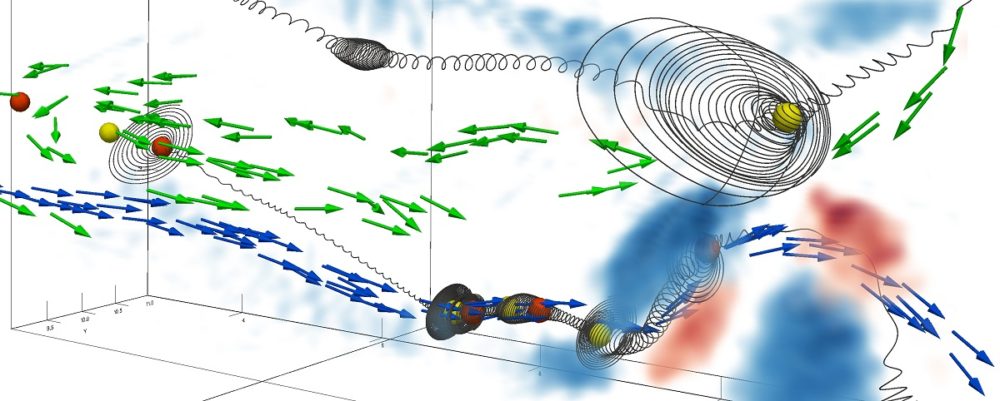Our team will focus on the role played by the magnetic topology in the processes of turbulent energy dissipation in space plasma. The synergy of kinetic, hybrid and magnetohydrodynamic simulations will be used to find out what magnetic topologies allow more efficient energy dissipation and conversion at different scales. These simulations will be directly compared with in situ observations of the MMS mission. Perspective applications for MMS, and for the future THOR missions will be drawn.
Turbulence and reconnection of magnetic fields are nowadays the most fascinating unsolved problems in space science. In the heliosphere, and more generally in astrophysics, magnetic reconnection plays a crucial role in the acceleration and the thermalization of turbulent plasma, leading to unpredictable events. Despite our experience in fluid turbulence, the basic transport mechanisms in magnetized plasmas remain enigmatic due to tremendous separation of scales. Vast deposits of magnetic energy are stored in the largest system scales (magnetosphere, heliosphere), and via non-linear processes they are transported to the smallest, kinetic, scales, at which plasma particles interact with electromagnetic field. Influence of magnetic topology could be critical for understanding the key mechanisms behind kinetic-scale turbulence.
To attack the problem from all directions, we will bring together an international team of experts in computer modeling, theory and observations. Our team includes world-class scientists renowned for their MHD models of magnetic reconnection and MHD turbulence, creating a solid background for our study. Our team is unique because the experts in fluid simulations of plasma are complemented by the experts in kinetic models (hybrid, Vlasov, particle-in-cell), and in observations (MMS, THOR). Only very recently has computational power reached the level sufficient for full three-dimensional kinetic simulations of magnetic reconnection. There cannot be better moment for building advanced models of space plasma that include kinetic turbulence and magnetic reconnection. Members of our team possess all necessary computer codes, and the required supercomputing power is at our disposal through the Partnership for Advanced Computing in Europe (PRACE), NASA and national (Belgium, China, Italy) allocations.
Models alone cannot provide answers about what is really happening in nature. Therefore our team includes the leading scientists who manage spacecraft and analyze observations. Direct exchange of expertise between modelers, theoreticians and observers is vital for the success of our effort. We are going to conduct observations guided by the existing and newly developed models. This way, the models will be tested against real data, and the correct ones can be selected and tuned. In turn, the models will be used to interpret the observations and guide observing campaigns. Members of our team have years of experience in working with data from such missions as Wind, Themis, Cluster, and MMS. They are also participating in the corresponding scientific groups and have full access to the satellite operation and data. Some of us have proposed a new mission, THOR, devoted specifically to studying plasma turbulence in space.
In order to understand the role of magnetic topology in energy dissipation, it is fundamental to tackle the problem from different perspectives, using different configurations, models and observations. We will perform numerical simulations in several carefully chosen plasma configurations that reflect the real space plasmas. These simulations are going to be confronted against observations. We will undertake the challenge at all scales, from global (system), to kinetic ones, to reach two main goals: (1) find out what kind of magnetic topologies allow more efficient energy dissipation and conversion at different scales in turbulent plasmas.; and (2) define the indicators classifying and characterizing the regions of intense energy dissipation which could guide the observations of the MMS and future THOR missions. Results of our study will produce a major step forward in magnetospheric physics and will impact the ongoing and future satellite missions as well as other fields of plasma physics, from astrophysics to laboratory and fusion.
